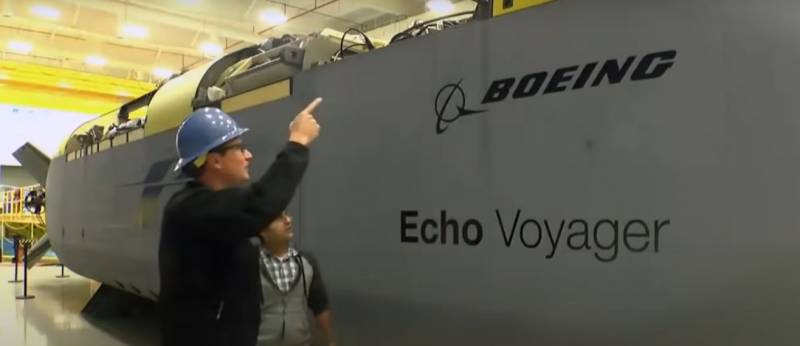The US Navy is implementing several underwater drone projects at once, including the first diesel-electric unmanned submarine

American researchers are currently testing ground subsystems for servicing the underwater vehicle and will soon begin its direct underwater testing. Rob Ibera, chief assistant to the head of the PMS406 unmanned marine systems program, announced this recently in the American Society for Naval Engineering Technology.
The Orca XLUUV, or Ultra Large Unmanned Submersible Vehicle, is a modular long-range underwater drone and the first unmanned diesel-electric submarine. The task of the machine is to set underwater mines, although it can also carry other loads.
In 2017, the U.S. Navy identified the submarine as a solution to joint operational needs. According to a September report by the Government Accountability Office titled "Ultra-Large Unmanned Underwater Vehicle" stated:
In March 2019, the US Navy awarded a $11,6 million boat contract to Boeing's Defense, Space and Security division for five prototypes.
The first Orca was originally scheduled to be delivered in December 2020, with all five expected by the end of calendar year 2022. Currently, the Navy has postponed the deadlines, and five cars are expected between February and June 2024.
Orca is just one of several unmanned underwater vehicle projects underway by the US Navy.
The Snakehead Service Submersible, the largest underwater-based unmanned vehicle, has requirements for both surface and underwater deployment. According to Rob Ibera, last year the development team completed successful testing of the prototype and made "impressive progress" in the development of new items.
Another representative of this group is Razorback. This medium submarine-launched UAV is part of a contractual collaboration between PMS406 and 408. It is intended for torpedo launches, for example. The Razorback is currently requiring dry deck shelter and a team of divers for recovery and special maintenance.
In addition, Viperfish is also being developed. This medium submersible will use the same technology and capabilities as the Razorback.
The goal of the large unmanned ships program is to implement a comprehensive land and sea based prototyping strategy. According to Ibera, the program is aimed at developing and providing additional capabilities, demonstrating key autonomy factors and improving reliability.
Translated into ordinary language, this could mean working on an entire program to carry out sabotage under water. An example of this kind of sabotage is the explosions on the Nord Stream and Nord Stream 2 gas pipelines. And who knows if these explosions were not part of the American tests? ..
Information